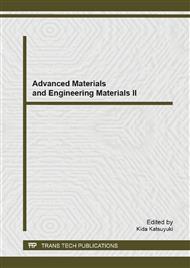p.704
p.708
p.712
p.716
p.720
p.725
p.729
p.733
p.737
The Influence of Material Optical Properties on Temperature Distribution in an Automotive Lamp
Abstract:
In order to improve thermal performance of an automotive lamp, heat transfer and flow process was studied and numerical simulation was carried out using NX thermal flow module. A finite element calculating model of CFD was established coupled radiation and natural convection to accurately predict lamp surface temperatures. Simulation results were consistent with the experimental data, and the validity of the computational model was confirmed. The influence due to different optical properties was researched by calculating the former model with other materials substituted. This paper presents that thermal analysis for products made by polymer material is feasible and effective.
Info:
Periodical:
Pages:
720-724
Citation:
Online since:
April 2013
Authors:
Price:
Сopyright:
© 2013 Trans Tech Publications Ltd. All Rights Reserved
Share:
Citation:


